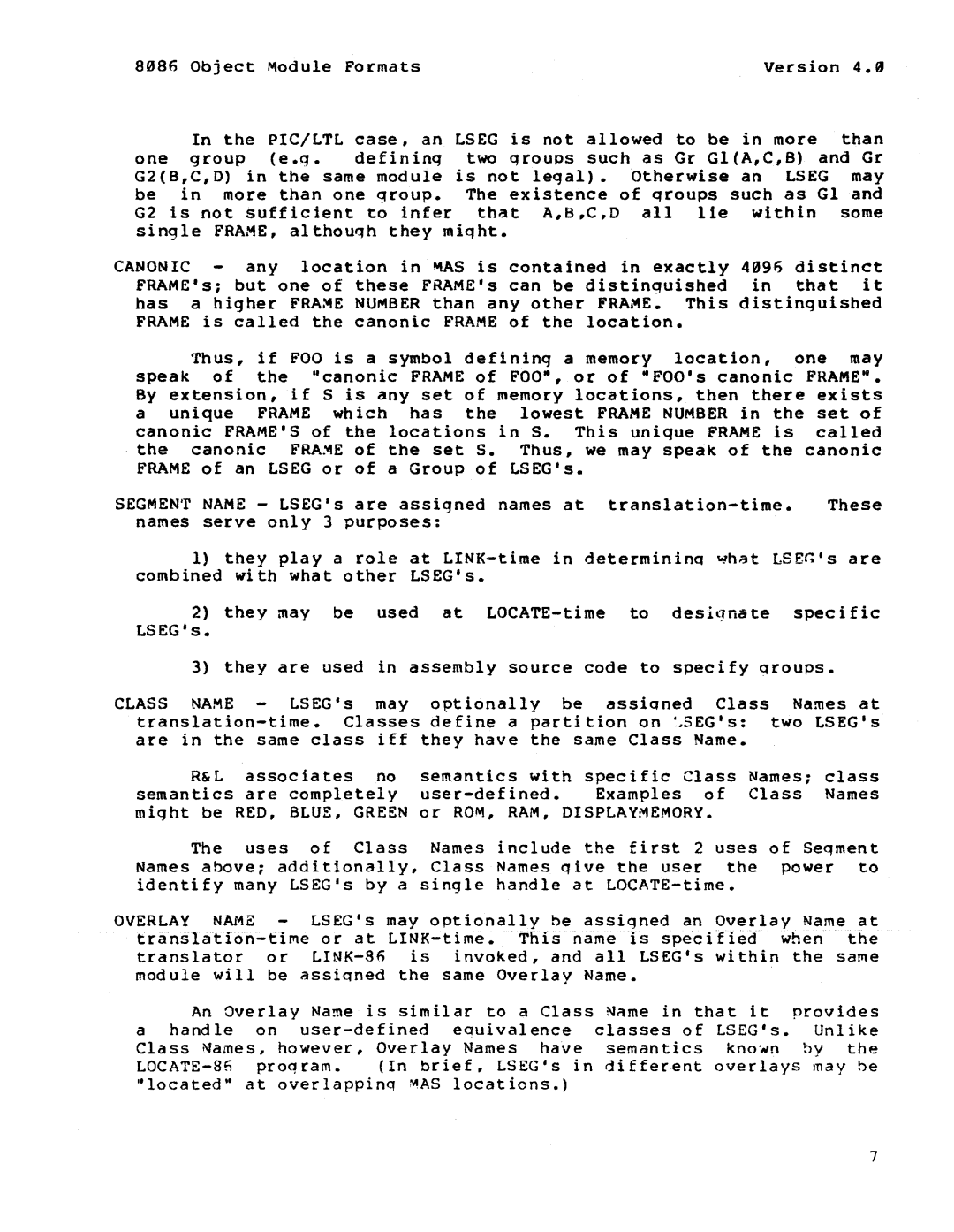
8086 Object Module Formats | Version 4.8 |
In the PIC/LTL case, an LSEG is not allowed to be in more than
one group (e.g. defininq two qroups such as Gr GI(A,C,B) and Gr G2(B,C,D) in the same module is not legal). Otherwise an LSEG may be in more than one group. The existence of qroups such as Gl and G2 is not sufficient to infer that A,B,C,D all lie within some single FRAME, althouqh they miqht.
CANONIC any location in MAS is contained in exactly 4996 distinct FRAME's; but one of these FRAME's can be distinguished in that it has a higher FRA~E NUMBER than any other FRAME. This distinguished FRAME is called the canonic FRAME of the location.
Thus, if Foa is a symbol defininq a memory location, one may speak of the "canonic FRAME of Faa·, or of
aunique FRAME which has the lowest FRAME NU~BER in the set of canonic FRAME'S of the locations in S. This unique FRAME is called the canonic FRA~E of the set S. Thus, we may speak of the canonic FRAME of an LSEG or of a Group of LSEG's.
SEGMENT NAME - LSEG's are assigned names at
1)they playa role at
2)they may be used at
LSEG·s.
3)they are used in assembly source code to specify groups.
CLASS NAME LSEG's may optionally be assiqned Class Names at
R&L associates no semantics with specific Class Names; class
semantics are completely
The uses of Class Names include the first 2 uses of Seqment Names above; additionally, Class Names qive the user the power to identify many LSEG's by a single handle at
OVERLAY NAME LSEG's may optionally be assiqned an Overlay Name at
An Overlay Name is similar to a Class N~me in that it provides
ahandle on
7
